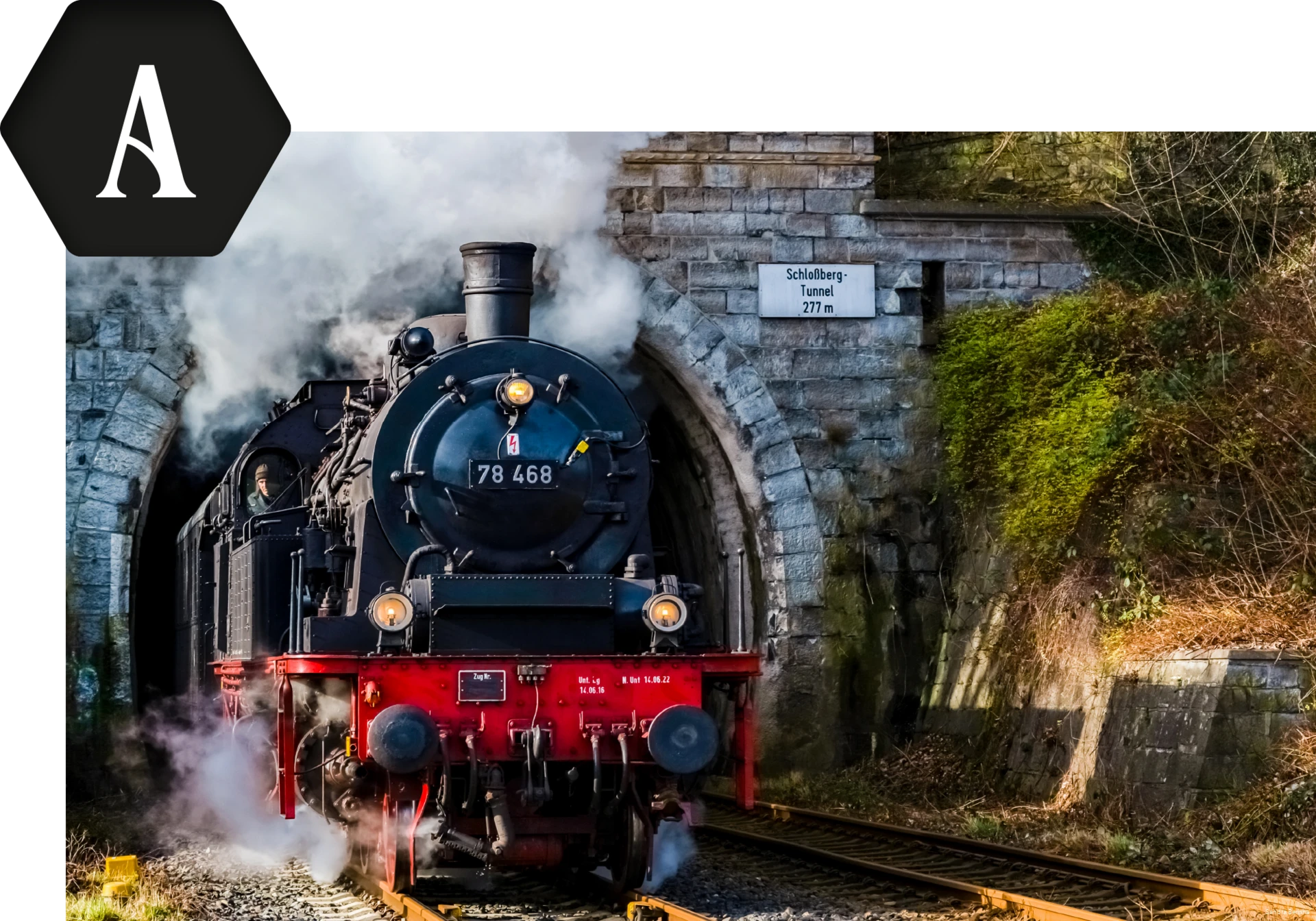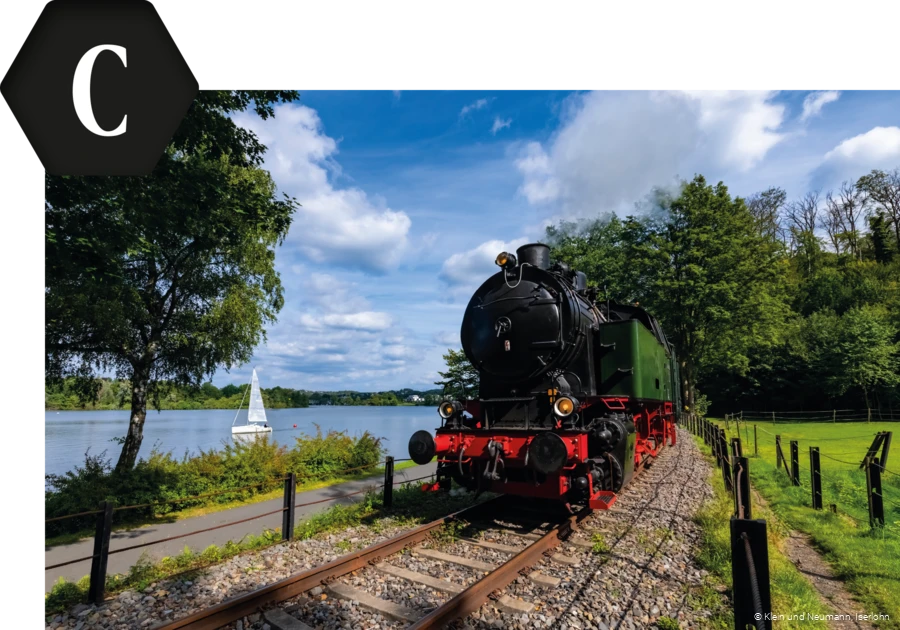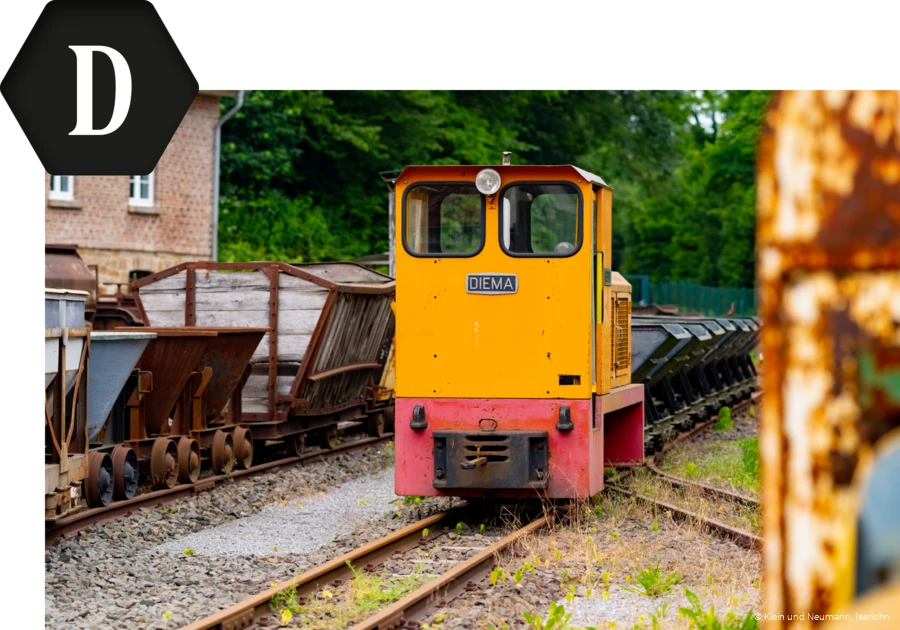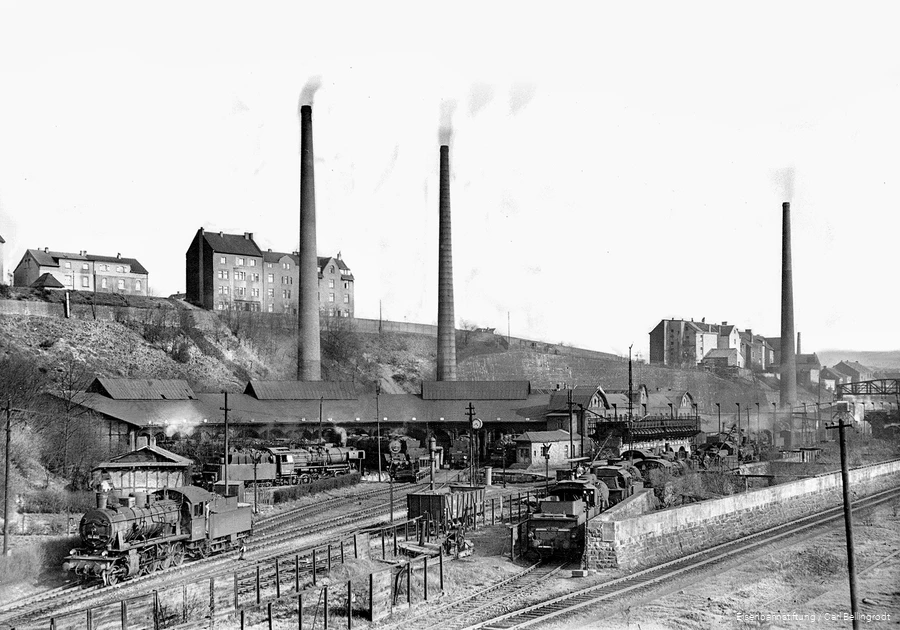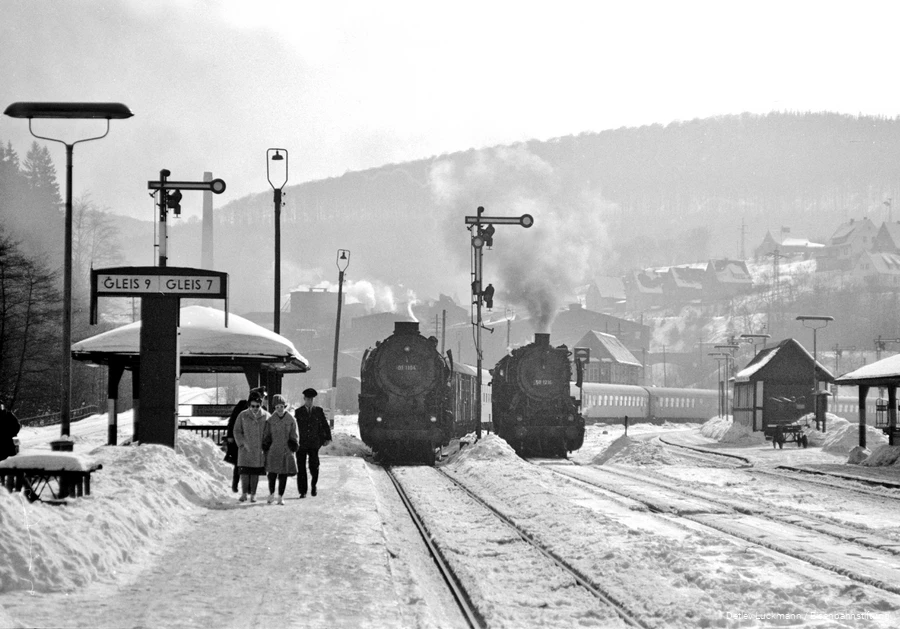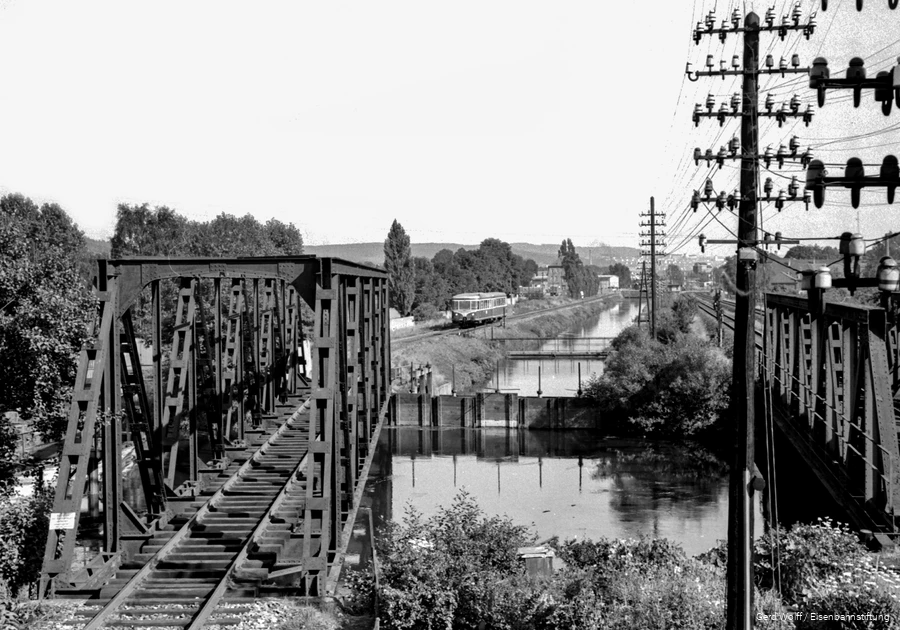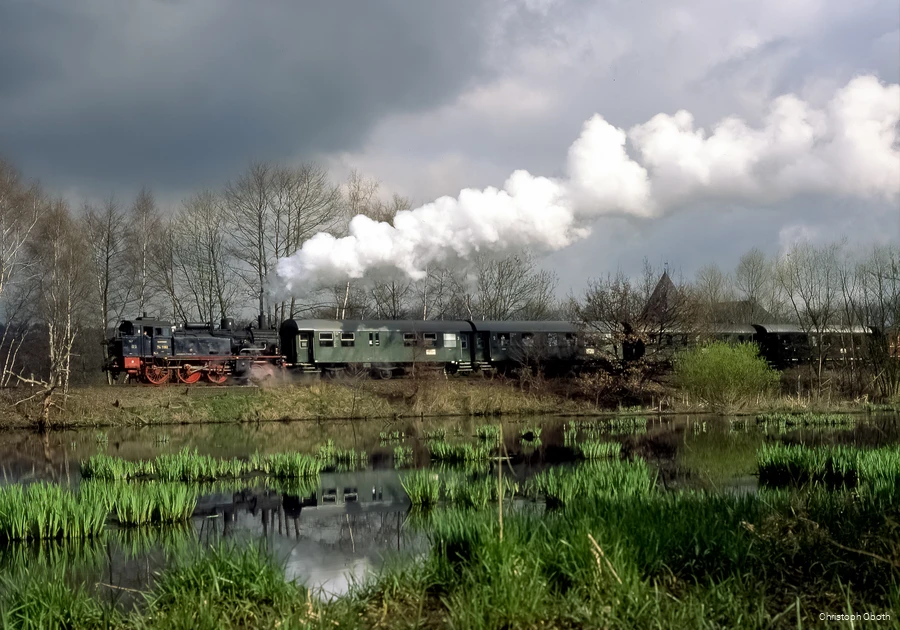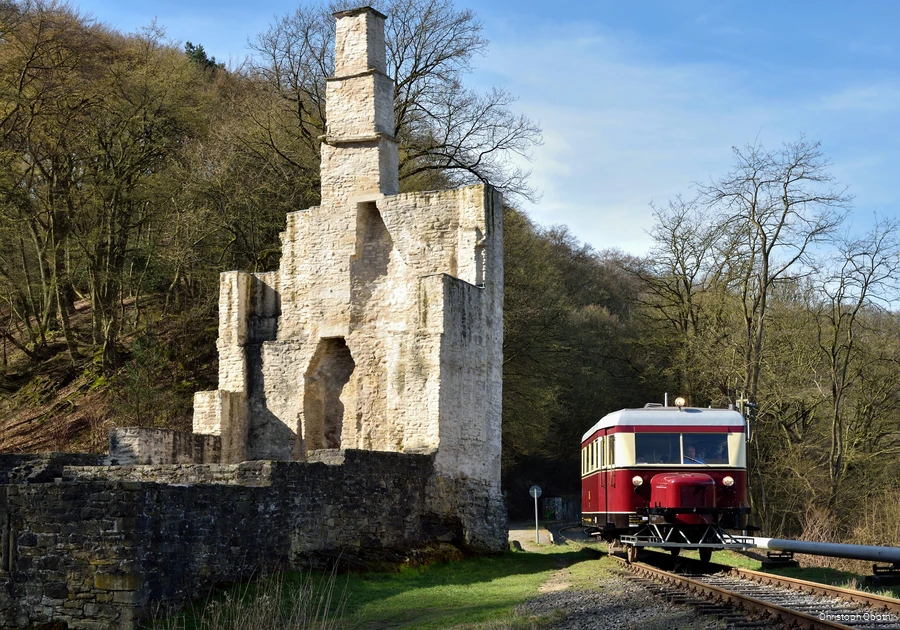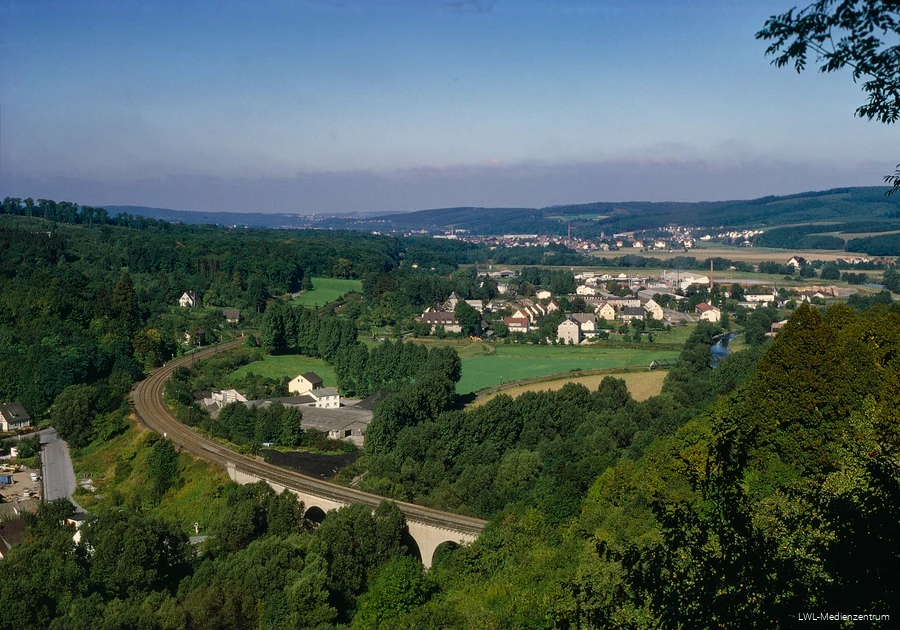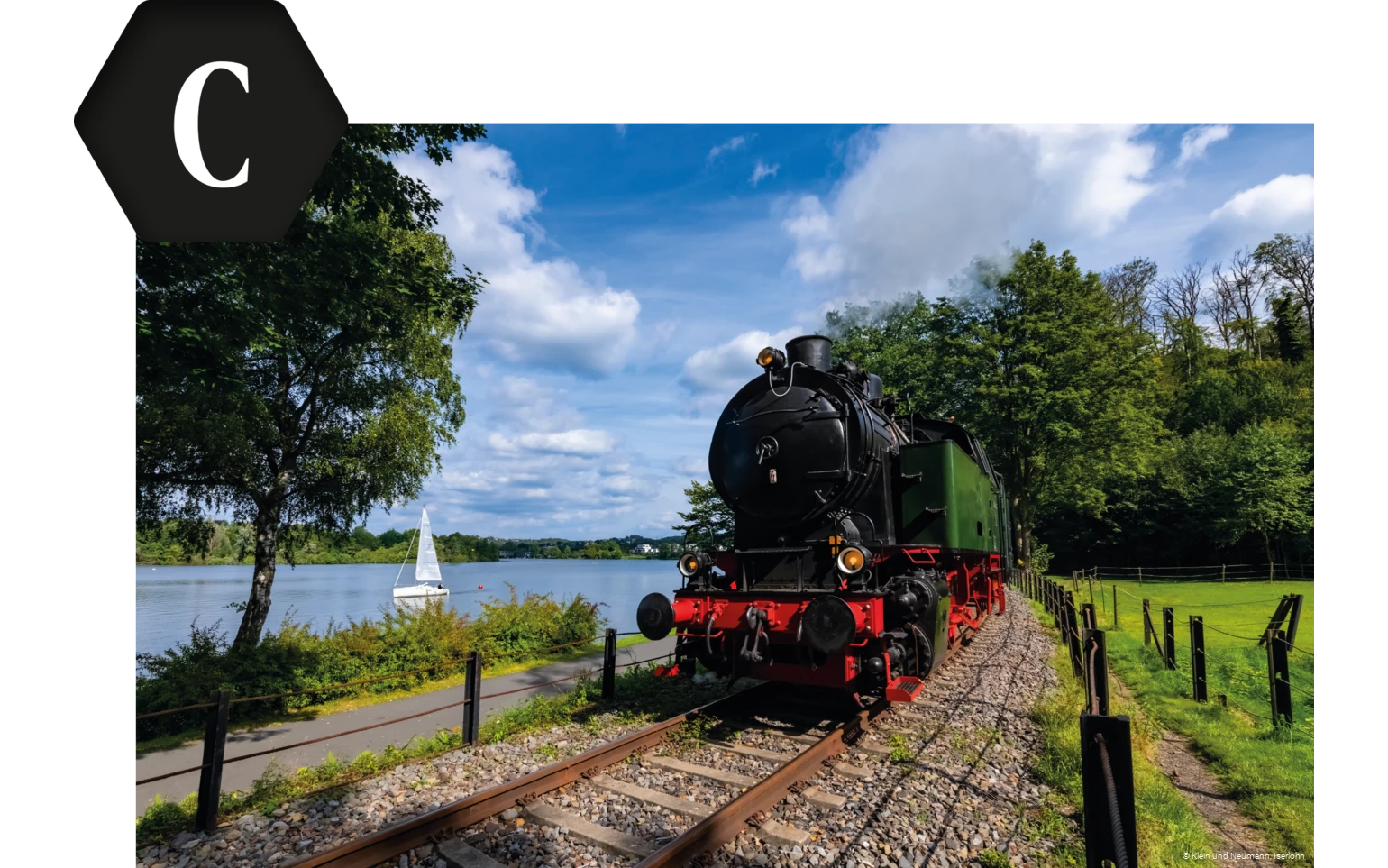Hagen depot, freight station [22.4.1956]
Ruhrtalbahn
A rail journey along the Ruhr from its source to its mouth - this is what the expanding route network of the Bergisch-Märkische Eisenbahngesellschaft made possible from the 1870s onward. The middle section between Düsseldorf and Hagen in particular is a resounding success. It connects the vast limestone deposits east of Ratingen with the Ruhr region and also reaches all those industrial plants that until then had relied exclusively on Ruhr shipping. The continuous opening of the line in 1874 immediately brought shipping to a standstill, while a lucrative market opened up for the railroad. As a result, Bochum-Dahlhausen advanced to become the central collection station for coal traffic and was given its own railroad depot ...
- Infotext read more
- … The "Obere Ruhrtalbahn" ("Upper Ruhr River Line") has a completely different objective: it is primarily intended as a long-distance route from Hagen towards Kassel. Yet it does not trigger a surge in industrial development similar to that in the Ruhr District, eventhough it provides a clear economic upswing in certain areas. A prime example is the increased cargo volume in the Neheim-Hüsten area, where the thriving lime and steel industries actually lead to the construction of two narrow-gauge railway lines. The Iron Curtain makes the Upper Ruhr River Line unattractive as a west-east axis. But it retains its importance as a link between the Ruhr region and the wintersports resorts of Winterberg and Willingen.
Steel Time Railways Nearby
The "Steel Time Travelers" Luise & Alfred: Ruhrtalbahn
Al:
The Ruhr Valley connects the mines and steel mills with the Rhine in Ruhrort - a natural transportation artery for a long time ...
- Full dialog text
-
Al: The Ruhr Valley connects the mines and steel mills with the Rhine in Ruhrort - a natural transportation artery for a long time.
Lu: But at high and low water, at snow and ice in winter, it's all over for the unfortunate horses that tow the barges upstream. What a drudgery, and dependent on the whims of nature, Alfred!
Al: I also don't mean the river so much as the valley itself: Low gradient, wide floodplains, and numerous small towns that derive their income from mining and steel production.
Lu: Just perfect for a flourishing railroad. And the Ruhr comes from where, dear Alfred?
Al: From the Sauerland, dearest Luise! That's why the line goes up to Warburg and on to Kassel! There's also something to get there!
Lu: ... and to bring! Coal for ore, lime and iron goods. This is not a wild horse trade, but a solid business on an equal footing. Where would you be without us?
Al: And vice versa. Let's ride up and down and enjoy instead of lamenting about "hen and egg". My heart also beats for the Sauerland - you know that!
Full steam ahead on the Ruhr (2002)
Short description (film without sound)
You can see impressions of a special trip on the 18 km long Ruhrtalbahn between Hattingen and Wetter-Wengern.
